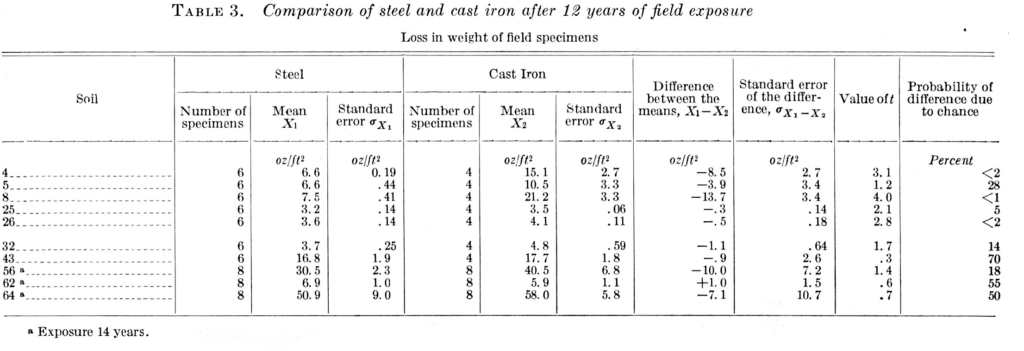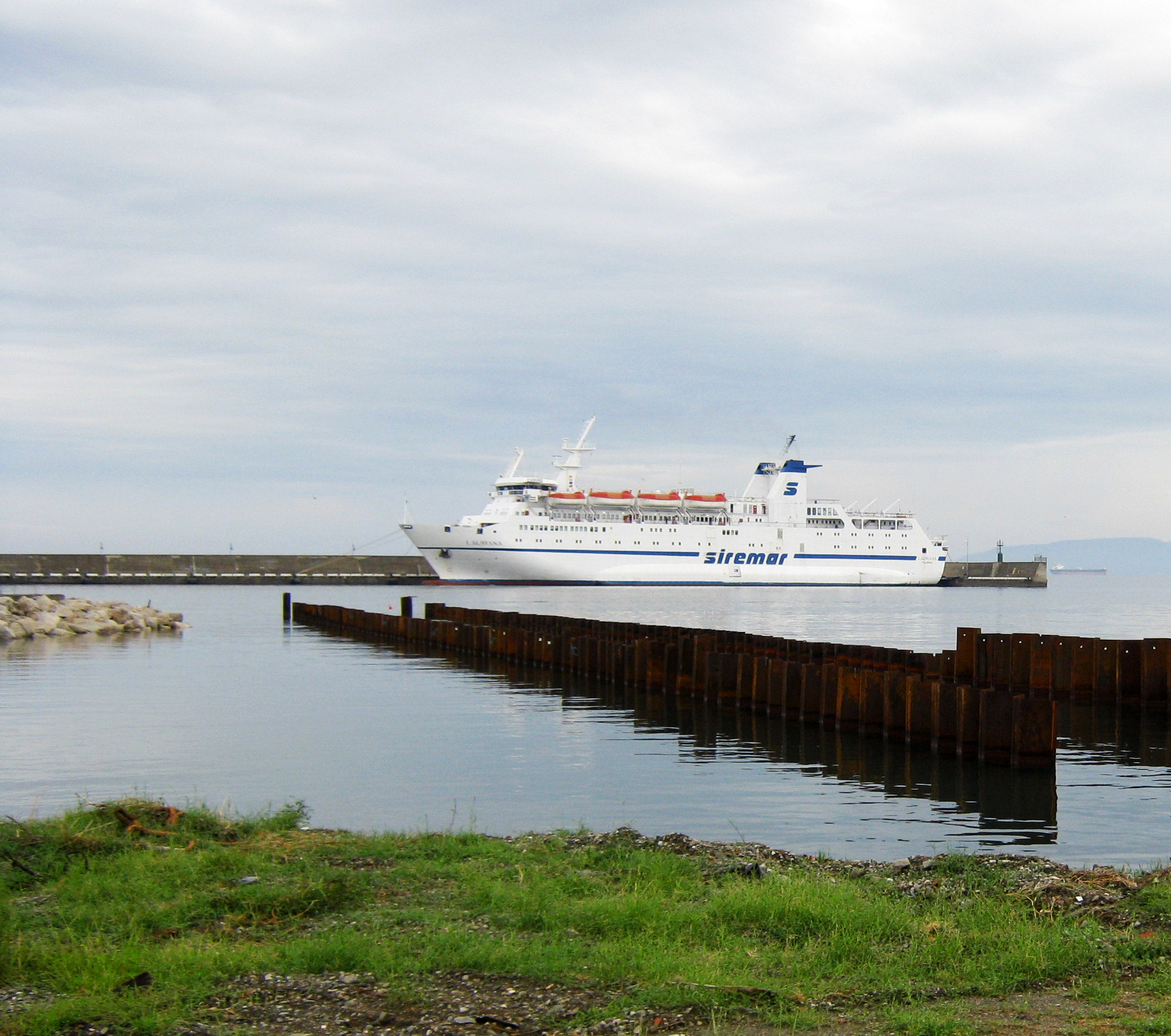Advantages in using steel pipes compared to ductile iron pipes for the construction of pipelines for the transport of fluids, including water.
Steel is, in every sense, a much more refined material than cast iron.
Just think of the technological process which, in part, is common to both materials as the steel derives from the refining of the cast iron coming out of the blast furnace.
Cast iron is in fact an iron-carbon alloy with a carbon content greater than 2%, while the steel used for example for water transport pipes is an alloy with less than 0.22% carbon.
The presence of a relatively high percentage of carbon, in the tight crystalline structure of iron, gives cast iron a behavior that typically exhibits low capacity to absorb energy (low resilience) and a typically brittle behavior.
Technological progress in recent decades has made it possible to create less brittle cast irons, such as ductile iron, where most of the carbon is found in the form of rounded graphite particles. This has greatly improved the characteristics of cast iron compared to previous versions, however, as will be seen later, very marginally compared to the performance of steel.
It is no coincidence that in the natural gas transport sector, steel pipe is the only one that can be used for medium and high pressures, while for low pressures and small diameters the only other material that can be used is HDPE.
Steel pipes have also benefited from technological progress, just think of the HFI (High Frequency Induction welding) welding process without the addition of material and the welding normalization process which makes the welded area micrographically homogeneous with that of the bulk of the pipe.
With the same hydraulic characteristics, steel pipe is also cheaper than ductile iron pipe, including anti-corrosion coatings.
There is no intention to delve into all the aspects connected to the comparison of the mechanical characteristics between steel and cast/ductile iron, as it would be too long and it is however considered a topic sufficiently well known to the likely recipients of these technical notes. We will limit ourselves to illustrating the results of some tests which unequivocally show the differences in terms of toughness between the two materials under examination. In particular, please note that one of the mandatory tests to which a batch of ERW/HFI longitudinally welded steel pipes must be subjected (according to international standards) is the crushing test, known as the “flattening test”. In essence, during production, several pipe samples are obtained (with the number established by the Standards) which are placed under a hydraulic press, as illustrated below:

In this regard, a comparison of a bending test is included, where it is clear that cast iron or ductile iron breaks very quickly, with an increase in deformation Steel, on the other hand, is very tough and can be subject to large plastic deformations, as can be seen from the following photo:


-
- – High resistance to both internal pressure and accidental stresses, such as high dynamic overpressures, telluric movements, irregularities of supports, impacts during transport and installation, etc.
- – Absolute absence of porosity, blowholes, cracks, and therefore guarantee of perfect sealing and impossibility of pollution through infiltration.
- – Long life, thanks to the effective defense against the aggressiveness of external agents and the conveyed fluids, obtained with the provision of adequate anti-corrosion coatings possibly assisted with cathodic protection
- – Possibility of producing tubes of considerable length. Steel pipes are usually produced in bars of 12÷13.5 meters or even more. Cast/ductile iron pipes usually have an average length of around 6 metres.
- – Great versatility in installation with the possibility of using cold forming and therefore the possibility of executing curves and special pieces on site, directly on site.
- – Possibility of making pipe joints by welding, thus creating a joint with efficiency equal to that of the pipe, which is not possible with the elastic gasket joints typical of ductile iron pipes.
-
-
-
- – Possibility to solve adaptation and modification problems during assembly, easily and in a limited time.
- – Possibility of eliminating many (and expensive) special pieces such as sleeves, inlets, inversion pieces, and of using all the pieces of pipe made available.
- – Maximum homogeneity and construction simplicity of the ducts as no gaskets, bolts, etc. are necessary.
- – Complete elimination of counterthrust walls in underground pipes.
- – Reduced maintenance: any replacement of sections can be done with flame cutting and subsequent welding.
- – The use of the spherical socket joint allows angular deviations of up to 5° for diameters greater than DN 150 during assembly, with consequent savings in bends.
- – Ease of protection of the joint and absolute electrical continuity of the pipeline (fundamental characteristic for the applicability of cathodic protection).
-
-
The elastic joint, however optimized, can never reach the efficiency of the welded joint thanks to which the steel pipeline is in fact a monolithic pipeline.
The great ability to absorb energy makes the steel pipe an exceptional material in the event of accidental or extraordinary events such as earthquakes, landslides and mudslides, having an overall probability of leaving the pipe intact much higher than any other material.
Corrosion phenomena – Steel and ductile iron comparison
Detractors of steel pipe often point the finger at the topic of corrosion and the need to implement cathodic protection, as if the latter were the key symptom that reveals an intrinsic weakness that pipes such as ductile iron ones do not have, as “they do not require cathodic protection”.
Let’s see how this last statement is indeed very far from reality and at this point we introduce the technical concept of the corrosion mechanism.
Well, by corrosion of a metal we mean the dissolution in the form of ions caused by the surrounding environment, in this case called electrolyte. The corrosive process of underground metal pipes or, in general, in a medium permeable to humidity, originates from an electromotive force, which generates an electric current which, in an area called the anode, passes from the metal to the electrolyte and vice versa, in another area called the cathode.

- In steel pipes, the iron passes into solution in the electrolyte, leaving the pipe with consequent funnel-shaped cavities on the external surface of the pipe.
- In ductile iron pipes, however, the results of ferrite corrosion do not leave the pipe and remain mixed in the graphite. This phenomenon is known as graphitization of cast/ductile iron.
In this situation the pipe can suddenly break even at low pressures, following stresses such as variations in network pressure, alternating loads and vibrations resulting from traffic, small landslides, earthquakes.
A series of tests carried out in the United States by the National Bureau of Standards (currently known as the National Institute of Standards and Technology or NIST) has repeatedly demonstrated that steel, gray cast iron and ductile cast iron corrode in the same soils with almost the same speed..
In this regard, the results of a study published in Vol. 50 n. are reported below. 6, research no. 2422 of NIST, where in table 1 the properties of the soils being studied are listed, in table 2 the laboratory results of the comparison between the corrosivity of steel and cast iron and in table 3 the results of this comparison in the field, after 12 or 14 years of exposure.



We now go into detail about how steel and cast/ductile iron pipes are protected from corrosion, each within their respective range of operating possibilities.
STEEL
Two types of protection are applied to steel pipes: active and passive.
Passive protection is the set of measures aimed at isolating the pipes electrically and mechanically from the environment in which they lie and from other foreign structures present. The purpose of passive protection is twofold:
- – prevent the onset of electrolytic corrosion on the structures;
- – make active protection possible.
Active protection (cathodic protection).
The passive protection measures which in any case significantly reduce corrosion phenomena are not such as to constitute an integral protection system as they cannot avoid those corrosion phenomena, particularly localized ones, which are generated either by damage to the coating, caused during the installation of the pipes, both due to the natural degradation of the coating itself accelerated by the aggressiveness of the soils, and finally due to particular electrical conditions of the latter. We are therefore forced to integrate the passive protection system with active protection or cathodic protection measures. This type of defense has the purpose of regulating the current flows, so as to make the entire surface of the tube cathodic (i.e. making it more negative). The protection is total as, at all times, the potential at every point of the structure is made equal to or lower than the immunity threshold. All this is achieved in practice by creating an electrical circuit between the pipes and the ground capable of affecting the entire pipe with direct current, wandering in the ground and appropriately dispersed therein, and ensuring that the current itself then abandons the pipe at certain points. booster through one or more metal conductors of the aforementioned electrical circuit.
The systems to obtain this circuit are created using two techniques:
- – systems with sacrificial anodes;
- – forced drainage systems.
The use of one or the other depends on the characteristics of the work to be protected and those of the installation environment.
DUCTILE IRON
Corrosion protection of cast/ductile iron pipes is limited to the passive one, consisting of coatings. For this type of pipe, active protection does not actually apply as it would theoretically be extremely expensive. In fact, to achieve good cathodic protection, longitudinal electrical continuity of the pipe is necessary, with a resistance as low as possible. Due to the presence of elastic joints, it would theoretically be necessary to shunt each section of pipe.
In other words, the elastic joints, in addition to being a weak point of the cast/ductile iron pipe, not at all comparable with the reliability of the monolithic welded joints typical of the steel pipe, make it extremely difficult, and practically impossible, to achieve cathodic protection.
Obviously the presence of the elastic joint, giving the cast/ductile iron pipe a relatively high longitudinal electrical resistance, partly mitigates the problem of corrosion by giving the pipe a sort of intrinsic protection which, however, is effective only in less aggressive soils. In more severe conditions, with clayey or more aggressive soils or in the presence of stray currents, the impossibility of applying active protection on cast/ductile iron pipes actually makes them subject to the onset of corrosion phenomena. The steel pipeline, as has been recorded, is instead completely protected, thanks to the synergy between the anti-corrosion coating and the possibility of applying cathodic protection.
CONCLUSIONS
In the meantime, we have reiterated a technically obvious concept, namely that steel is a material with a more “noble” mechanical behavior than that of cast/ductile iron, which is instead characterized by lower resistance, resilience and toughness. From this derives a number of advantages in the use of steel pipes where cast/ductile iron cannot win even on an economic level.
In the previous “technical notes” the phenomenon of corrosion was then analysed, comparing the two types of pipe on this very delicate level, with the aim of highlighting the differences.
In the meantime, it was recalled that steel and cast/ductile iron are both ferrous materials and therefore both subject to the phenomenon of corrosion. This phenomenon manifests itself more evidently in steel, while in cast/ductile iron it manifests itself in an “internal” and more subtle form. Also through the support of authoritative experimental data, it was then seen that the corrosion speeds of the two types of materials, both in the laboratory and in the field, are almost comparable. It is also true that pipeline failures occur, in the vast majority of cases, in correspondence with lining shortages, due to poor construction of the same, incorrect installation by operators or wear due to the aggressiveness of the soil.
Given what has just been stated, a cast/ductile iron pipeline is on the one hand more protected due to the greater longitudinal electrical resistance due to the presence of the elastic material of the joints. However, since the problems, according to the literature, occur due to weakness or natural degradation of the passive protection, and since steel and cast/ductile iron corrode at approximately the same speed, it goes without saying that the steel pipeline, having the possibility of application of cathodic protection, it is the only one that has the possibility of being 100% protected.
In conclusion, cathodic protection, which is often seen by designers and operators as a sort of “hassle” for steel pipelines, is actually a formidable and unique advantage because, together with anti-corrosion coatings (e.g. triple-layer polyethylene ), represent the definitive solution to protect pipes from the onset of corrosive phenomena and design a reliable work, with little maintenance and extremely durable.

